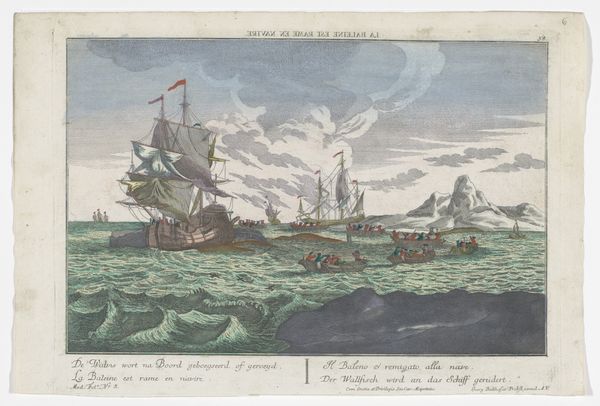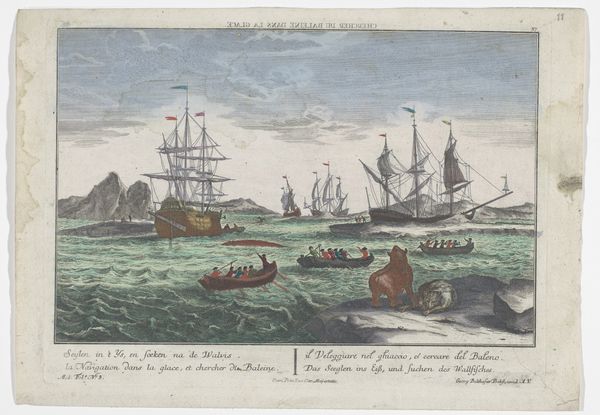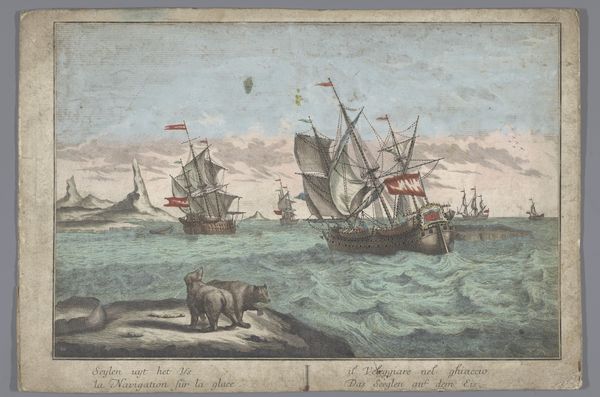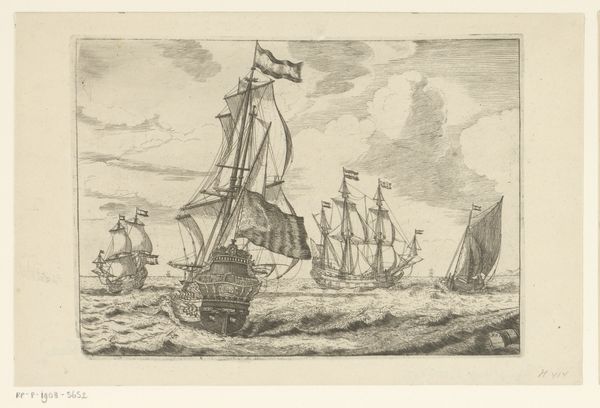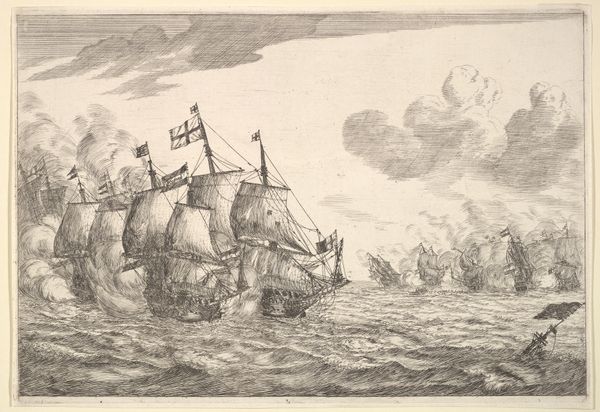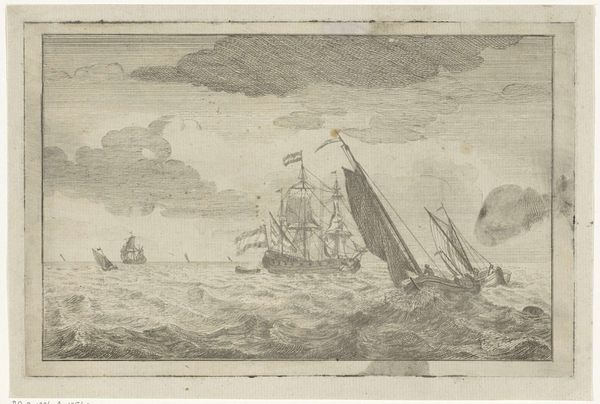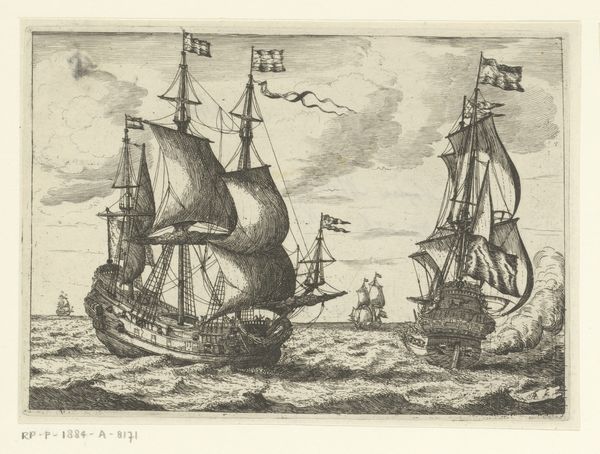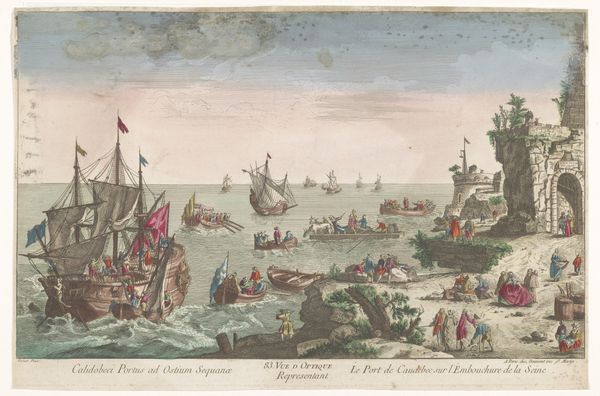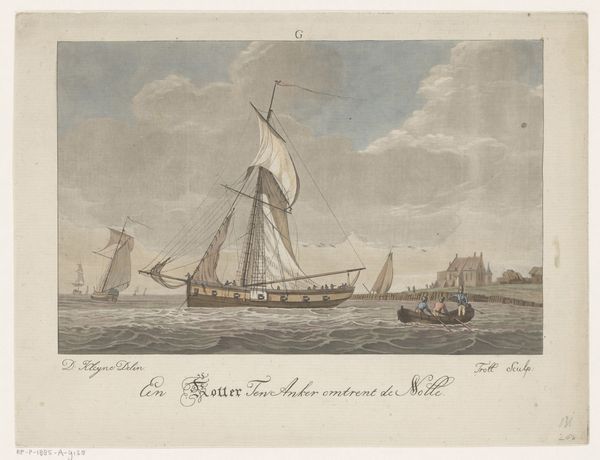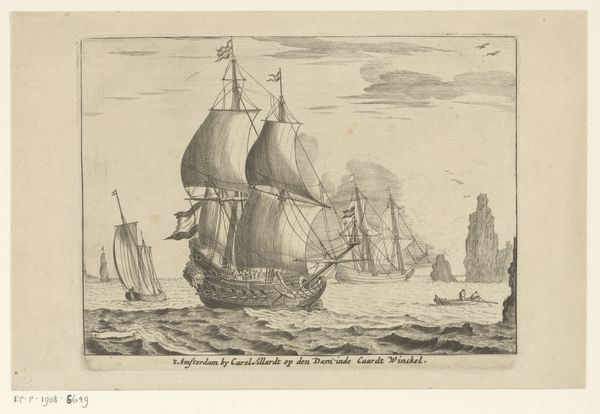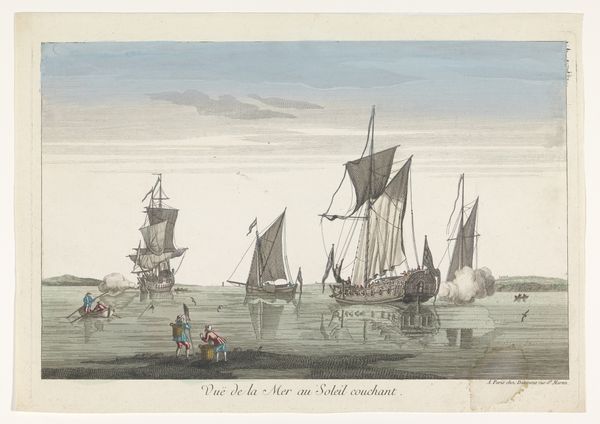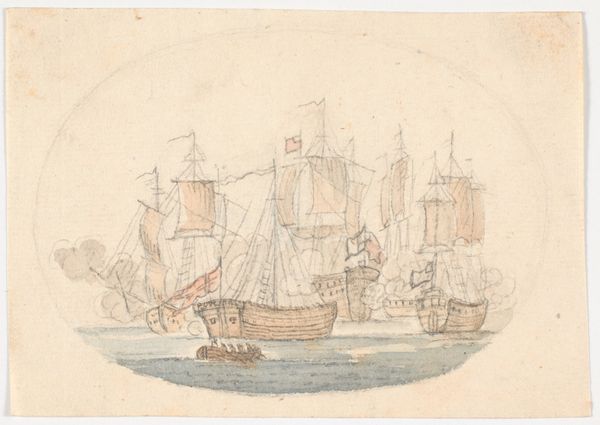
print, etching
# print
#
etching
#
landscape
Dimensions: height 308 mm, width 428 mm
Copyright: Rijks Museum: Open Domain
Editor: We’re looking at "View of Ships Sailing on the Arctic Sea," an etching by Georg Balthasar Probst, created sometime between 1742 and 1801. The choppy water and imposing icebergs give the scene a dramatic, almost foreboding feel. What stands out to you in this piece? Curator: What immediately strikes me is the interplay between exploration, commerce, and the representation of nature within a socio-political context. These ships aren't merely depicted sailing; they're symbols of imperial ambition and mercantile reach. The perilous ice sea is simultaneously a resource to be exploited and a challenge to be overcome. Consider who the audience for such a print might be. How does it fuel the narratives of maritime power at the time? Editor: That's fascinating. I hadn't considered how the image might function as propaganda or promotion of sea exploration and commerce. Are the animals present meaningful? Curator: Absolutely. The bears likely underscore both the exoticism and the danger of the arctic, playing into existing stereotypes and the perception of the 'untamed' wilderness, a resource to be controlled by civilized societies. This reinforces a social hierarchy inherent in colonial exploration. Editor: So, the image tells more than just a story about sailing; it reveals a set of power dynamics and societal assumptions about the Arctic. Curator: Precisely. Analyzing it through that historical lens allows us to dissect the narratives being constructed about exploration and domination during the period. Understanding these narratives reveals power dynamics. Editor: This was incredibly insightful! It’s amazing to think about the artwork speaking for more than what is at first glance. Thank you. Curator: My pleasure! It highlights the crucial public role art plays.
Comments
No comments
Be the first to comment and join the conversation on the ultimate creative platform.
